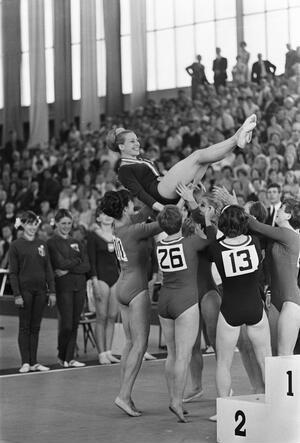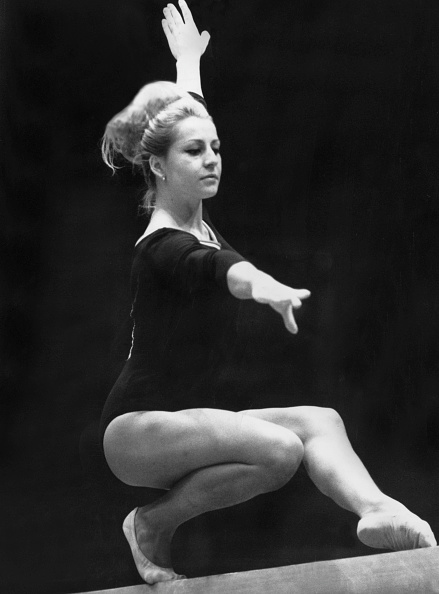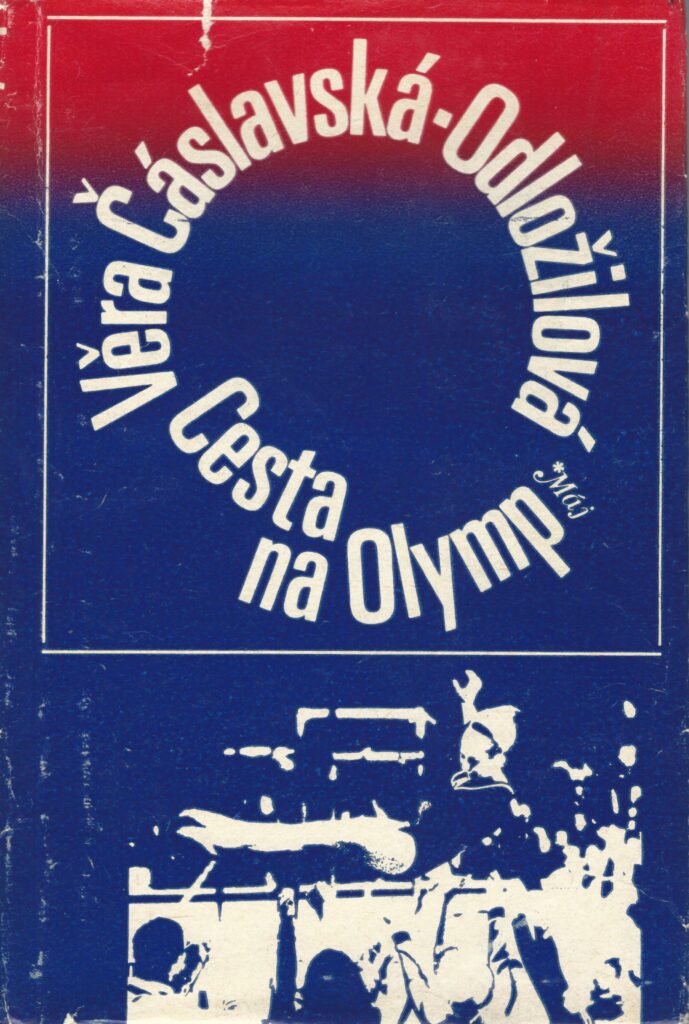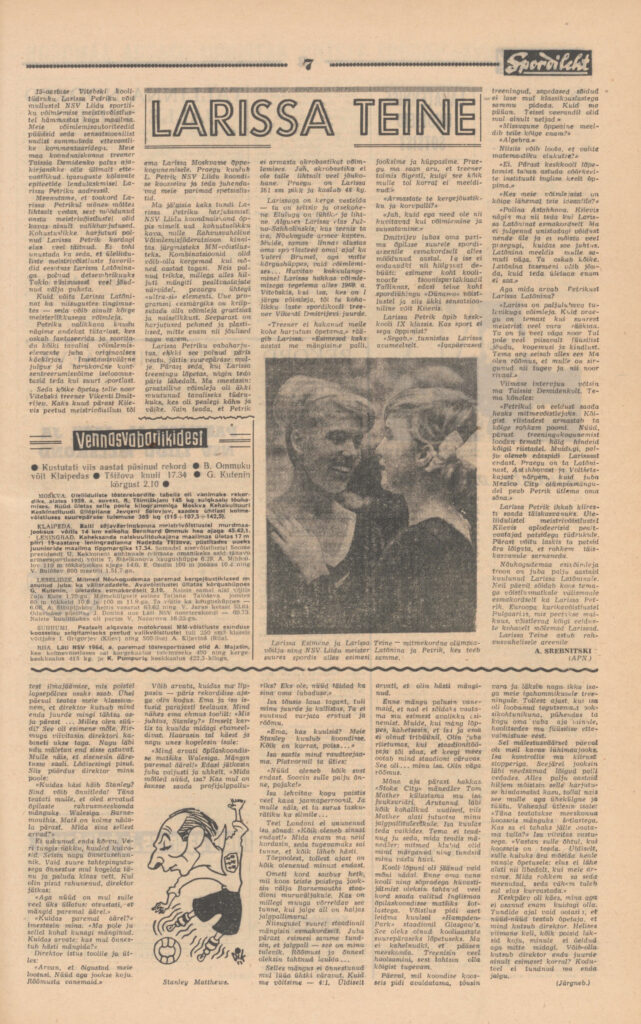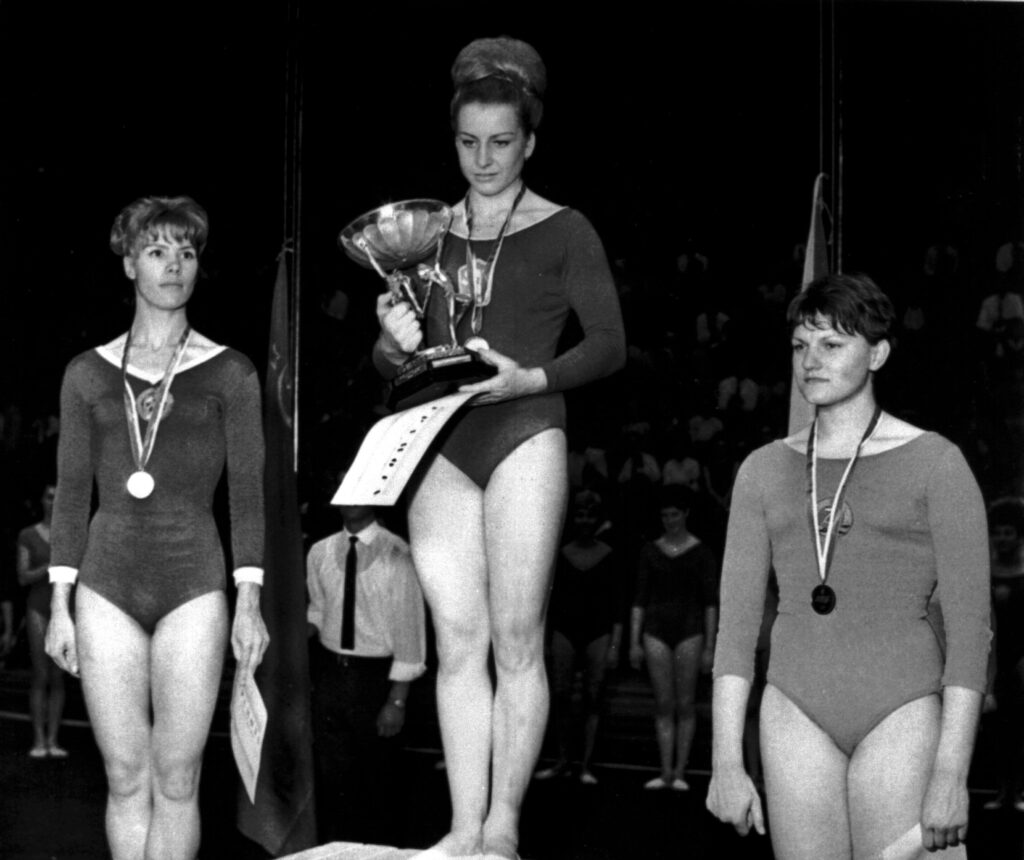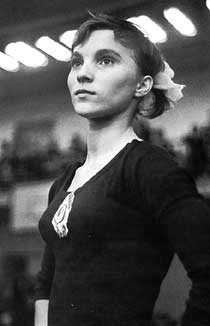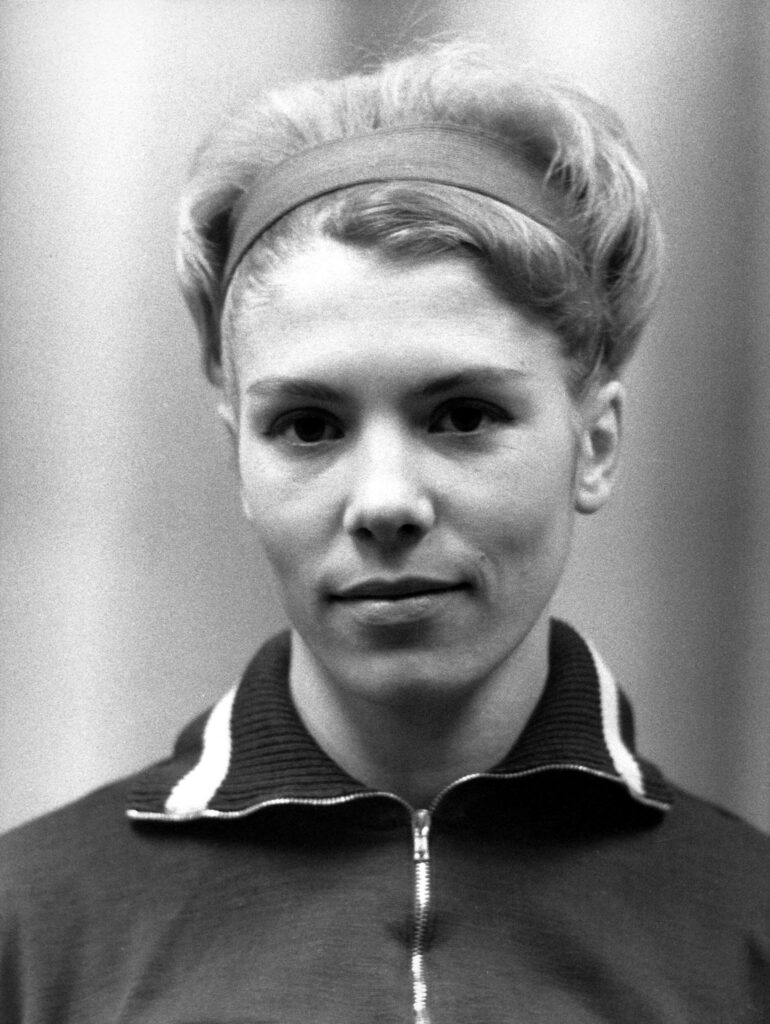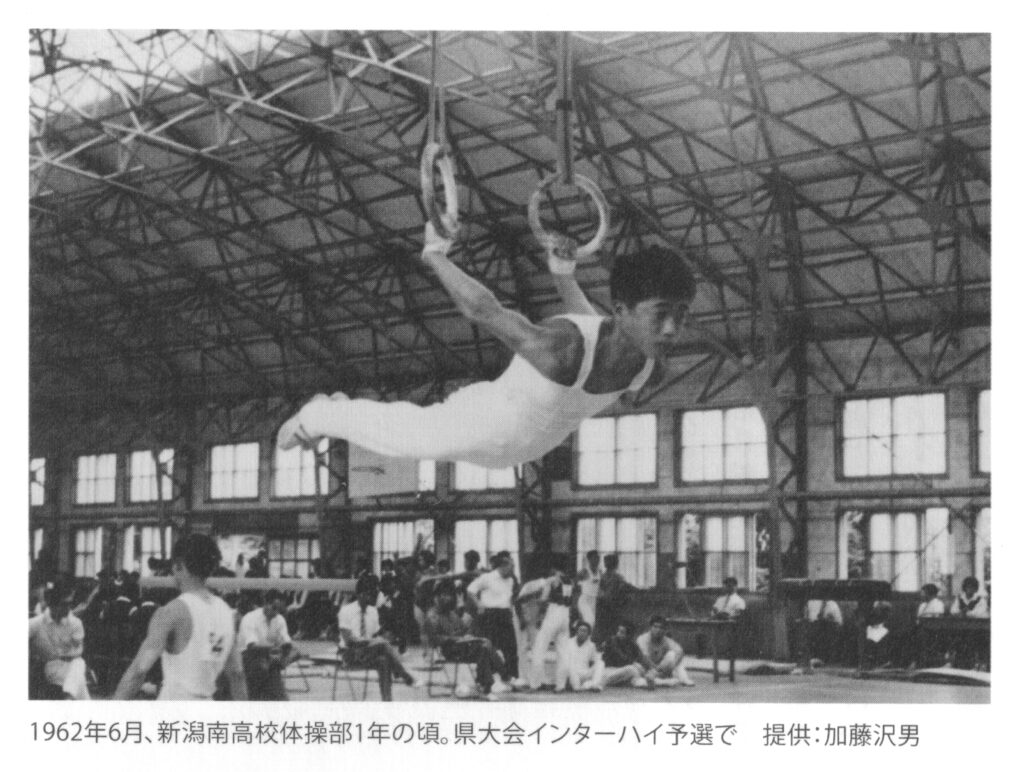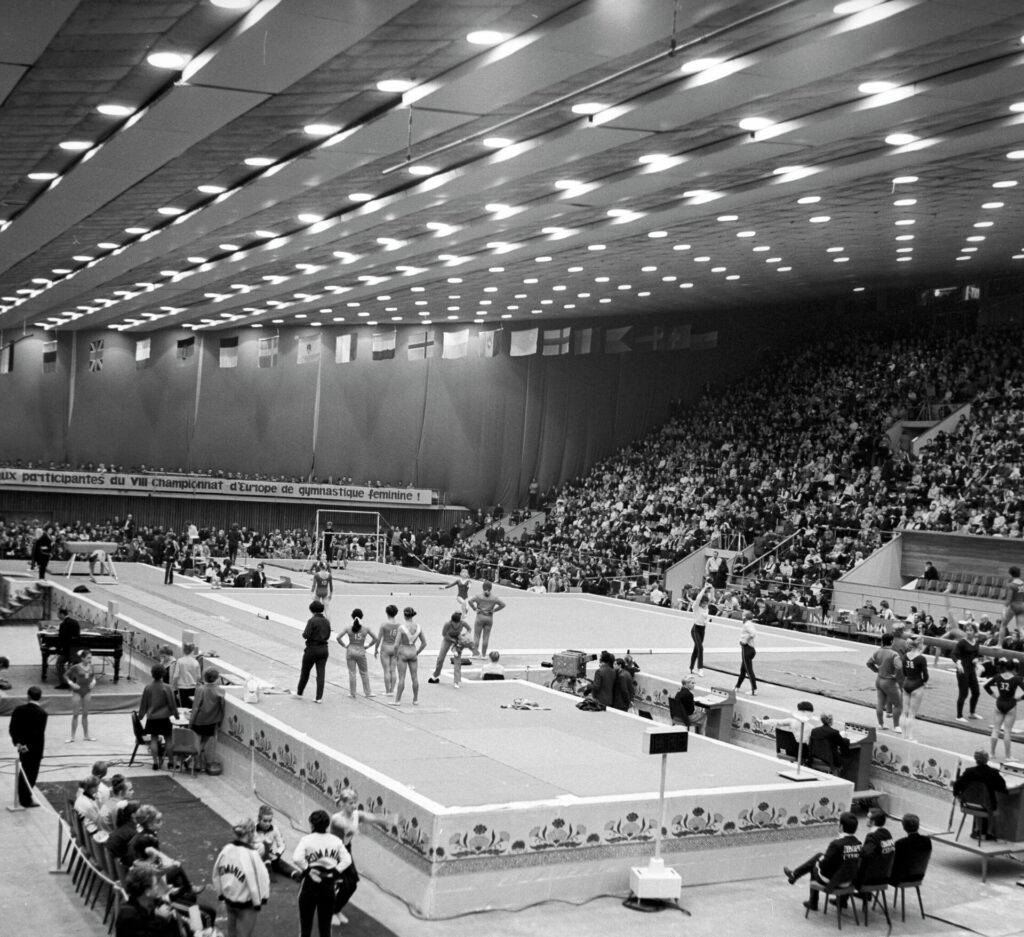After Čáslavská’s disappointment in her performance in Dortmund, she debated if she should take a break from competing. Perhaps she had become too familiar to the judges, one coach suggested. (At one point in this section, Čáslavská recalls how the overly familiar Latynina was ignored during a press conference with Larisa Petrik in 1965.)
To make gymnastics exciting again, she and her coach Matlochová reworked all her routines, adding new elements to every routine. They made practice fun, with Matlochová riding a broom and trying to distract Čáslavská during her beam routines. They set her routines and training cues to music.
Čáslavská went on to compete at the 1967 European Championships. But Čáslavská had her doubts at the beginning of the competition. After a rough bar routine during the first rotation and an exceptional performance by Kuchinskaya on beam, Čáslavská was unsure if she would be able to defend her title. But right before beam, one of her superstitions happened. Someone broke a glass, and she had her lucky shards of glass.
In the end, she became the only gymnast in the history of the European Championships to sweep all five events twice. She even scored two perfect 10.0s during the event finals.
Another interesting tidbit: For someone who ended up on top of the podium many times, Čáslavská disliked being on top of the podium. It made her feel awkward.
So, with no further ado, here’s how Čáslavská recalls the 1967 European Championships in her autobiography from 1972.
Note: You can read more about the 1967 European Championships here and here.
